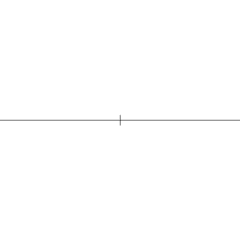You are using an out of date browser. It may not display this or other websites correctly.
You should upgrade or use an alternative browser.
You should upgrade or use an alternative browser.
Why does the brain make such erroneous assumptions?
- Thread starter sprinkles
- Start date
More options
Who Replied?sprinkles
Well-known member
- MBTI
- xxxx
Yes, if there's equality at all it must logically come from that, under straightedge and compass rules." Equality must result from the precision of the construction, and not be a factor in the construction process. " Sure about that??
For example you weren't allowed to mark the straight edge at say 12cm and then turn it and try to draw another 12cm line because you introduce more chances to make a mistake.
http://en.wikipedia.org/wiki/Compass-and-straightedge_construction
Each construction must be exact. "Eyeballing" it (essentially looking at the construction and guessing at its accuracy, or using some form of measurement, such as the units of measure on a ruler) and getting close does not count as a solution.
Each construction must terminate. That is, it must have a finite number of steps, and not be the limit of ever closer approximations.
Of course now we use other improved systems to solve problems that this method could not, but this method was incredibly adequate during its time.
sprinkles
Well-known member
- MBTI
- xxxx
Also see the compass and straightedge construction of a square:

No measuring involved. The points are made equidistant by the method of construction itself, hence the lines may be of arbitrary length. The lines of this square are logically of indefinite length - is n equal to n? Necessarily yes if the same thing is equal to itself. You didn't ensure n was equal to n though, because what is n, and what is not n? This isn't determined in the construction since you never actually defined n.

No measuring involved. The points are made equidistant by the method of construction itself, hence the lines may be of arbitrary length. The lines of this square are logically of indefinite length - is n equal to n? Necessarily yes if the same thing is equal to itself. You didn't ensure n was equal to n though, because what is n, and what is not n? This isn't determined in the construction since you never actually defined n.
just me
Well-known member
- MBTI
- infj
I guess precision from construction can start on a table as an engineer draws it for the builder to perform. Thus, equality can result from the construction process. Theodolites, builders levels, and such, are the builder's rules and compasses, GPS coordinates, and electronic distance measurers. They use different tools to actually make and reproduce what is on paper in much larger scales. Nice square, btw.
sprinkles
Well-known member
- MBTI
- xxxx
I guess precision from construction can start on a table as an engineer draws it for the builder to perform. Thus, equality can result from the construction process. Theodolites, builders levels, and such, are the builder's rules and compasses, GPS coordinates, and electronic distance measurers. They use different tools to actually make and reproduce what is on paper in much larger scales. Nice square, btw.
Yeah. I didn't mean in general anyway, only for ideal squares. Of course, if the practical thing is to measure the square, then that's what you do.
They only had this rule to achieve ideal precision at the time. It was already known to them that more could be accomplished with a marked ruler and measurements in actual practice.
Also I meant geometric construction, which has more to do with abstract theory than physically making things (though it can be applied in practice also). It's more related to algebra than it is to drafting. Still works in drafting though because the theories are mathematically sound and proven.
Of course in actual construction as in building physical objects, you have to measure and check for equality, see if squares are really square, and other things like that.
Last edited:
